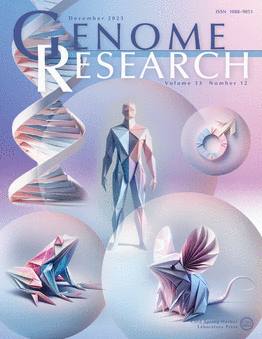Highly accurate reference and method selection for universal cross-dataset cell type annotation with CAMUS
IF 5.5
2区 生物学
Q1 BIOCHEMISTRY & MOLECULAR BIOLOGY
引用次数: 0
Abstract
Cell type annotation is a critical and essential task in single-cell data analysis. Various reference-based methods have provided rapid annotation for diverse single-cell data. However, how to select the optimal references and methods is often overlooked. To this end, we present a cross-dataset cell-type annotation methodology with a universal reference data and method selection strategy (CAMUS) to achieve highly accurate and efficient annotations. We demonstrate the advantages of CAMUS by conducting comprehensive analyses on 672 pairs of cross-species scRNA-seq datasets. The annotation results with references selected by CAMUS achieved substantial accuracy gains (25.0-124.7%) over random selection strategies across five reference-based methods. CAMUS achieved high accuracy in choosing the best reference-method pair among 3360 pairs (49.1%). Moreover, CAMUS showed high accuracy in selecting the best methods on the 80 scST datasets (82.5%) and five scATAC-seq datasets (100.0%), illustrating its universal applicability. In addition, we utilized the CAMUS score with other metrics to predict the annotation accuracy, providing direct guidance on whether to accept current annotation results.基于CAMUS的通用跨数据集单元类型标注的高精度参考和方法选择
在单细胞数据分析中,细胞类型标注是一项至关重要的任务。各种基于参考的方法为不同的单细胞数据提供了快速标注。然而,如何选择最佳的参考文献和方法往往被忽视。为此,我们提出了一种具有通用参考数据和方法选择策略(CAMUS)的跨数据集单元类型标注方法,以实现高精度和高效的标注。我们通过对672对跨物种scRNA-seq数据集进行综合分析,证明了CAMUS的优势。在五种基于参考文献的方法中,CAMUS选择参考文献的标注结果比随机选择策略获得了显著的准确率提升(25.0-124.7%)。在3360对参考方法对中,CAMUS选择最佳参考方法对的准确率为49.1%。此外,CAMUS在80个scST数据集(82.5%)和5个scATAC-seq数据集(100.0%)上的最佳方法选择准确率较高,说明其普遍适用性。此外,我们利用CAMUS分数和其他指标来预测标注准确性,为是否接受当前标注结果提供直接指导。
本文章由计算机程序翻译,如有差异,请以英文原文为准。
求助全文
约1分钟内获得全文
求助全文
来源期刊

Genome research
生物-生化与分子生物学
CiteScore
12.40
自引率
1.40%
发文量
140
审稿时长
6 months
期刊介绍:
Launched in 1995, Genome Research is an international, continuously published, peer-reviewed journal that focuses on research that provides novel insights into the genome biology of all organisms, including advances in genomic medicine.
Among the topics considered by the journal are genome structure and function, comparative genomics, molecular evolution, genome-scale quantitative and population genetics, proteomics, epigenomics, and systems biology. The journal also features exciting gene discoveries and reports of cutting-edge computational biology and high-throughput methodologies.
New data in these areas are published as research papers, or methods and resource reports that provide novel information on technologies or tools that will be of interest to a broad readership. Complete data sets are presented electronically on the journal''s web site where appropriate. The journal also provides Reviews, Perspectives, and Insight/Outlook articles, which present commentary on the latest advances published both here and elsewhere, placing such progress in its broader biological context.
 求助内容:
求助内容: 应助结果提醒方式:
应助结果提醒方式:


